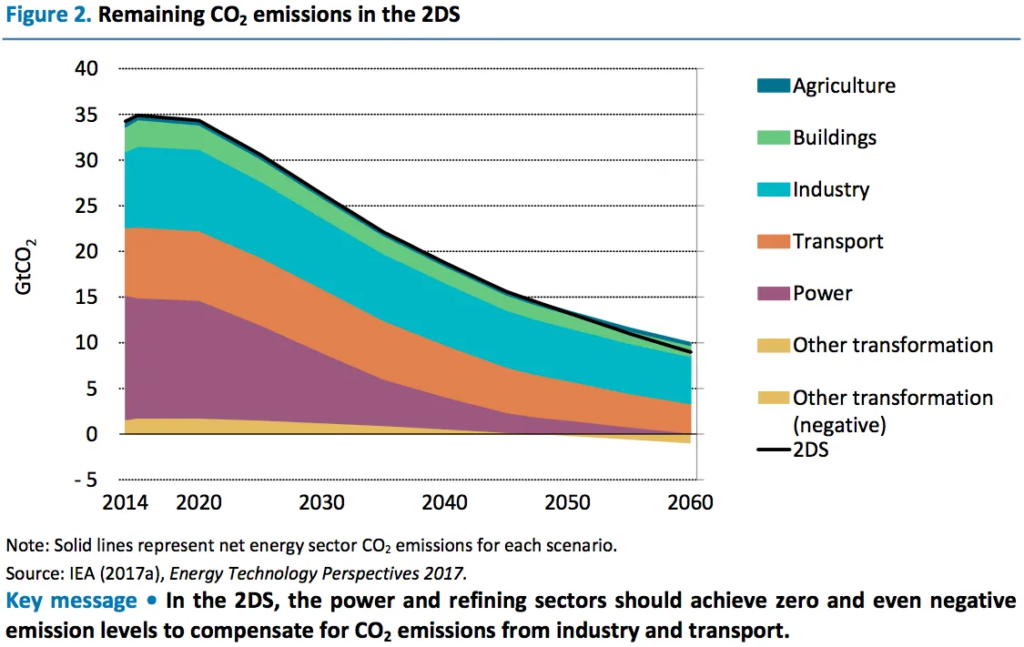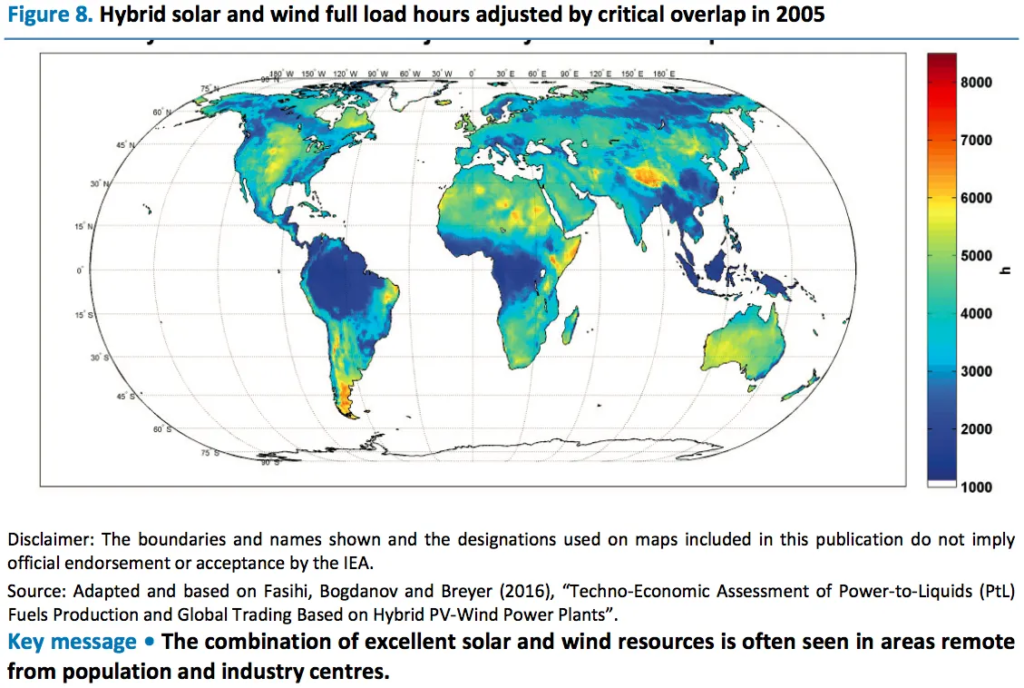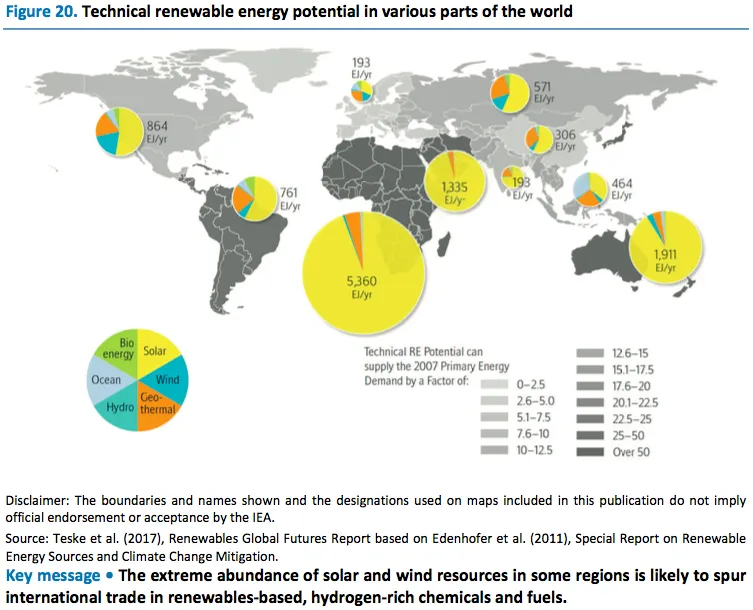Renewable Energy for Industry: IEA’s vision for green ammonia as feedstock, fuel, and energy trade
By Trevor Brown on November 10, 2017
This morning in Beijing, China, the International Energy Agency (IEA) launched a major new report with a compelling vision for ammonia’s role as a “hydrogen-rich chemical” in a low-carbon economy.
Green ammonia would be used by industry “as feedstock, process agent, and fuel,” and its production from electrolytic hydrogen would spur the commercial deployment of “several terawatts” of new renewable power. These terawatts would be for industrial markets, additional to all prior estimates of renewable deployment required to serve electricity markets. At this scale, renewable ammonia would, by merit of its ease of storage and transport, enable renewable energy trading across continents.
The IEA’s report, Renewable Energy for Industry, will be highlighted later this month at the COP23 in Bonn, Germany, and is available now from the IEA’s website.
Besides direct renewable heat and electrification, hydrogen-rich chemicals that are easy to store and transport could serve as feedstock, process agents and fuels. They could be produced in areas with abundant and cheap resources, and shipped to consuming centers, opening the prospects to a new kind of international energy trade.
This Insights Paper examines emerging technology options, and reviews national and international policies that could foster their development and their deployment.
IEA Insight publication, Renewable Energy for Industry, 11/09/2017
This international trade, and its vast scale, has been the subject of previous articles about projects from Germany and Japan looking at exploiting Australian renewable energy resources.
Industrial emissions: the need for investment today
Decision-makers searching for an argument for investing today in sustainable ammonia technologies will find one in the IEA’s analysis, tied to an extended time horizon.
To illustrate the problem: ammonia production causes 1% of global GHG emissions today, which is a fraction of the greenhouse gas emissions of the agriculture sector. Therefore, the best-intentioned agricultural R&D decision-maker will deploy his limited resources to solve the bigger problem (broader agricultural emissions), and not invest in carbon-free ammonia demonstration and deployment projects.
Unfortunately, emissions that appear qualitatively small relative to today’s global challenge are nonetheless quantitatively large: we also need to address tomorrow’s problems, hence we need to extend the investment time horizon.
The major areas of industry upon which this report focuses are the “combustion and process emissions” of a small but hugely significant selection of industrial processes, including “cement manufacturing, iron- and steelmaking, and chemical production.” These processes are “responsible for 70% of all global direct industrial CO2 emissions today … notably from hydrogen manufacturing, limestone calcination in cement production, and iron ore reduction in steelmaking.”

In its projection of the future emission levels necessary to achieve a two-degree temperature rise scenario (2DS) compatible with the Paris Accords, the IEA illustrates the problem of ignoring these industrial emissions, including emissions from ammonia production: while industrial emissions are “only” 24% of the problem in 2014, they will be 44% of the problem in 2050.
And, unless we start investing in solutions for industrial sustainability, that percentage will continue to grow.
The role of renewables in the power sector … has been investigated extensively. This is less the case for industry, for which renewables have been the topic of only a limited number of studies …
In the 2DS, by 2060 the power sector is already virtually decarbonised, while the industry and transport sectors become the largest source of CO2 emissions … the share of direct CO2 emissions from industry increases considerably in the 2DS, from 24% in 2014 to 44% in 2050 …
Industries have considered electricity a costly source of heat, and rightly so, as electricity has been produced mostly in thermal plants from combusting fossil fuels at an efficiency rarely exceeding 50% … However, recent and rapid cost reductions in some renewable electricity-generating technologies have led to the emergence of new, affordable options that have not been considered in many studies … hydrogen-rich chemicals could ultimately enable nearly complete electrification of the global economy.
IEA Insight publication, Renewable Energy for Industry, 11/09/2017
The author of the IEA report, Cedric Philibert, provides detailed analysis of both energy costs and GHG emissions of various technology variants, and mentions the recent coinage of the term “emiciency” to communicate the costs of both efficiency and emissions, in order to “underline the shift in drivers from reducing energy costs to reducing polluting emissions.”
Green Ammonia: “a new kind of international energy trade”
The key to understanding Philibert’s argument lies in two aspects of renewable energy technologies.

First, variability can be reduced or eliminated by increasing production in areas that combine both solar and wind power generation. This significantly increases the full load hours (FLH) or capacity utilization rate, and therefore decreases the intensity of capital expenditure on these installations.
The challenge of managing the variability of renewables can be further resolved by introducing innovative approaches to ammonia synthesis: appropriately sizing electrolyzer and synthesis loop capacities, to enable renewable ammonia at a cost competitive with steam methane reformation of natural gas, at today’s prices – this is another subject already covered here.
Second, the “extreme abundance of solar and wind resources in some regions is likely to spur international trade in renewables-based, hydrogen-rich chemicals and fuels.” Because densely-populated areas do not generally have renewable energy generating capacity equal to their power consumption requirements, the need for a renewable energy commodity emerges and, in turn, enables renewable resource-rich areas to export ammonia as a decarbonizing energy commodity:
The combination of excellent solar and wind resources is often seen in areas remote from population and industry centres … the potential of remote, high-quality solar and wind resources may vastly exceed current global electricity needs, renewable production of ammonia may serve many more purposes than its current uses in industry. As discussed in the remainder of this report, this may include various uses of ammonia or its hydrogen content as a reducing agent in steelmaking, or as a fuel for heat for stationary end-use in the industry and power sectors.
IEA Insight publication, Renewable Energy for Industry, 11/09/2017

The affordability of these easily transportable fuels, as well as limitations on renewable capacities in densely populated regions, will most probably give rise to a new era of international energy trade based on renewables rather than fossil fuels – an era that has already begun with international trading of wood pellets. The common-sense idea that renewables always means “local” may not survive the transition from the goal of partially responding to current electricity needs to responding to the broader energy needs of the global economy – in particular those of industry.
IEA Insight publication, Renewable Energy for Industry, 11/09/2017
You can also read the full article at AmmoniaIndustry.com.